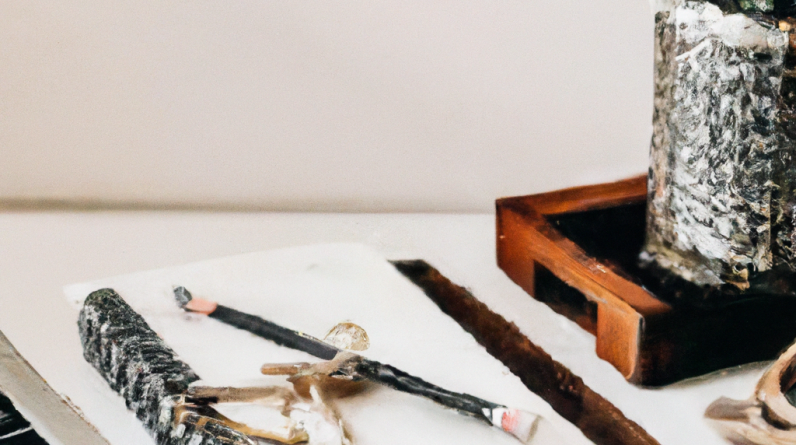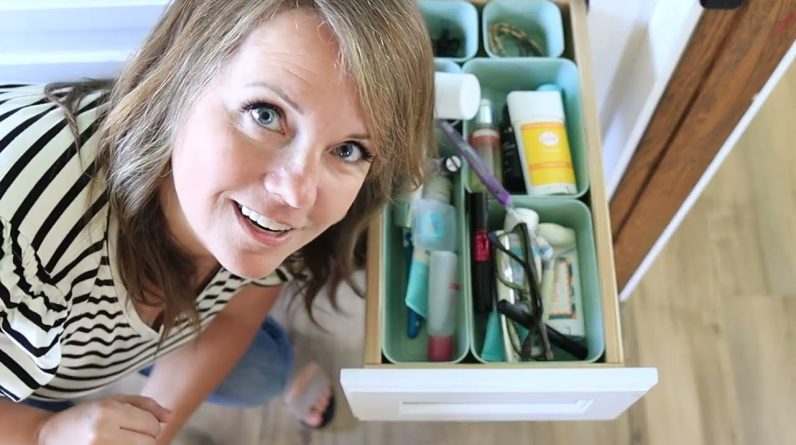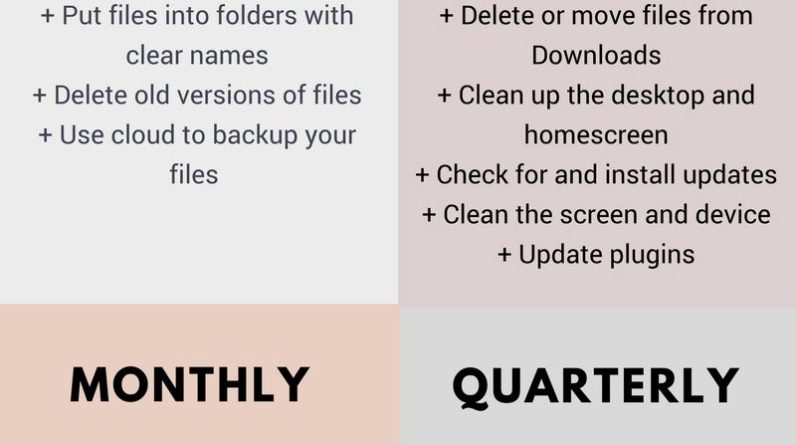
Imagine a world where your digital life is organized, efficient, and stress-free. No more cluttered desktops, overflowing email inboxes, or endless scrolling through social media feeds. In “The Ultimate Guide to Digital Decluttering,” you will discover simple yet effective strategies to declutter your digital space, embrace digital minimalism, and reclaim control over your digital life. Say goodbye to digital overwhelm and hello to a more focused and productive you. It’s time to declutter your virtual environment and enjoy the benefits of a simplified and streamlined digital existence.
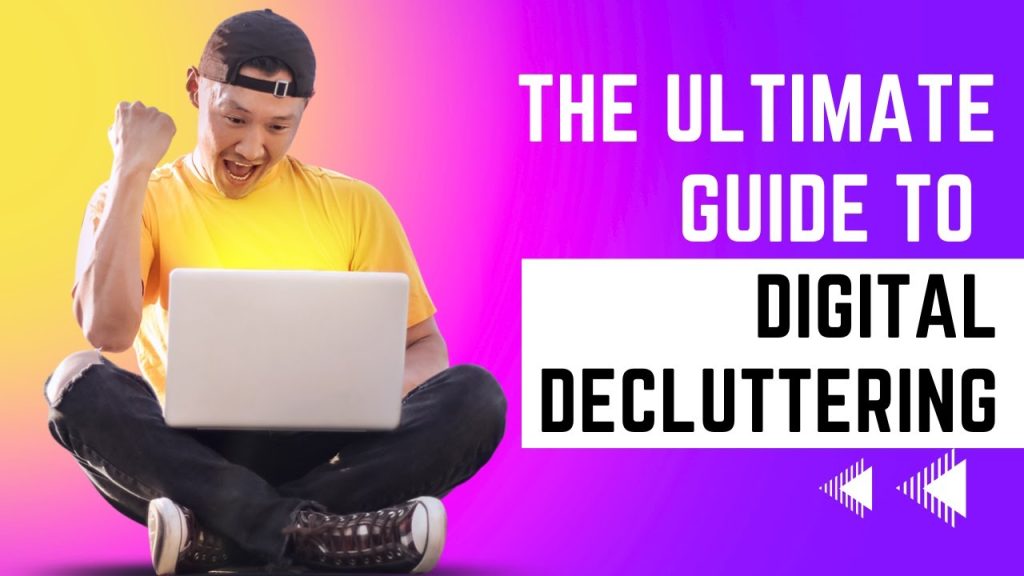
This image is property of i.ytimg.com.
Table of Contents
Understanding Digital Clutter
In today’s digital age, it’s no surprise that our digital lives can quickly become cluttered. But what exactly is digital clutter? Digital clutter refers to the accumulation of unnecessary and disorganized files, emails, photos, and subscriptions that can overwhelm our digital spaces. It can range from having an overflowing inbox to a cluttered desktop or social media feeds filled with irrelevant content.
Digital clutter not only takes up valuable storage space but also has a significant impact on our mental well-being. It can lead to feelings of overwhelm, stress, and anxiety, as well as reduced productivity and focus. With the constant bombardment of information, notifications, and updates, it’s no wonder that our digital lives can become cluttered and chaotic.
However, there are a multitude of benefits that come with digital decluttering. By clearing out the digital clutter, we can regain control over our digital spaces and improve our mental well-being. Digital decluttering allows us to create a more organized, efficient, and streamlined digital environment, which can lead to increased productivity, improved focus, and reduced stress.
Preparing for Digital Decluttering
Before diving into the process of digital decluttering, it’s important to take some time to prepare. This involves assessing the extent of your digital clutter, setting decluttering goals, creating a plan and schedule, and gathering necessary tools.
Assessing the extent of digital clutter involves taking stock of all your digital spaces, such as your computer, smartphone, tablet, and email inbox. Take note of the areas that are most cluttered and identify the types of digital clutter that are taking up the most space and causing the most disorganization.
Setting decluttering goals is essential to stay focused and motivated throughout the process. Determine what you hope to achieve through digital decluttering, whether it’s creating a more organized email inbox, decluttering your smartphone, or organizing your digital photos.
Once you have your goals in place, it’s time to create a plan and schedule. Break down your decluttering goals into smaller, manageable tasks and assign specific dates or timeframes to each task. This will help you stay organized and ensure that you make progress toward your goals.
Gathering the necessary tools for digital decluttering is also important. This may include software or apps for organizing files and folders, cloud storage services for backing up important data, and tools for managing email inbox clutter. Having these tools readily available will make the decluttering process much smoother and more efficient.
Organizing Digital Files and Folders
One of the key areas to tackle during digital decluttering is organizing your digital files and folders. Here are some steps you can take to effectively organize your digital files:
Implementing a file naming system can greatly improve file organization. Develop a consistent naming convention that includes relevant keywords and dates to easily locate files in the future. Avoid using generic names or leaving files with default names assigned by applications.
Creating and organizing folders is another crucial step in file organization. Group related files together within folders and use subfolders as needed. Consider organizing files based on categories, projects, or years to make it easier to locate specific files.
As you go through your files, be ruthless in removing unnecessary files. Delete duplicates, outdated versions, and files that are no longer needed. This will free up storage space and make it easier to navigate through your files.
Backups and cloud storage are essential for preserving important files and protecting them from loss. Implement a backup system to regularly save copies of your files on external hard drives, cloud-based services, or network storage. This ensures that your files are safe and easily accessible, even if you experience a hardware failure or data loss.
Managing Email Inbox Clutter
For many of us, our email inboxes can quickly become a source of overwhelm and clutter. Here are some strategies for effectively managing email inbox clutter:
Unsubscribing from unnecessary newsletters is a great way to declutter your inbox. Take the time to evaluate the newsletters that you regularly receive and unsubscribe from those that no longer provide value or interest to you. This will reduce the number of incoming emails and help keep your inbox organized.
Creating filters and folders can assist in better organizing incoming emails. Set up filters or rules to automatically sort emails into specific folders based on criteria such as senders, subjects, or keywords. This will help ensure that important emails are easily accessible and clutter is minimized.
Archiving and deleting old emails is another important step in decluttering your inbox. Create an archive folder for emails that you want to retain for reference but don’t necessarily need in your main inbox. Delete emails that are no longer relevant or serve any purpose. This will help keep your inbox clean and manageable.
Managing spam and junk mail is crucial for maintaining an organized inbox. Use filters to automatically redirect spam and junk mail to a separate folder or enable your email provider’s spam filter to automatically detect and filter out unwanted emails. Regularly review and empty your spam folder to keep it from becoming cluttered.

This image is property of www.thelifestyle-files.com.
Taming Social Media Overload
Social media platforms can easily become a source of overwhelming information and clutter. Here are some strategies for taming social media overload:
Assess your social media usage and consider which platforms are truly valuable to you. Unfollow or unfriend unnecessary accounts that do not add value or serve your interests. Streamlining your social media feeds will help reduce the amount of irrelevant content and make your social media experience more enjoyable.
Organize your social media feeds by creating lists or groups. Categorize accounts based on their relevance or interests, and use these lists or groups to filter your feed. This allows you to focus on specific content and reduce the amount of clutter in your social media feeds.
Setting boundaries and creating a mindful social media strategy is essential for promoting a healthy relationship with social media. Define specific times or limits for social media usage and stick to them. Consider scheduling designated social media breaks to give yourself time away from the digital noise and focus on other activities.
Cleaning up Digital Photos and Videos
Digital photos and videos can quickly accumulate, leading to a cluttered digital space. Here are some steps to clean up and organize your digital media:
Sorting and deleting duplicate or low-quality media is a crucial first step. Use a duplicate file finder tool or manually go through your photos and videos to identify duplicates. Delete these duplicates to free up storage space and avoid clutter.
Organize your media by creating albums or categories. Group photos and videos based on events, locations, or themes to make it easier to navigate through your media library. Consider using descriptive file names or tags to further enhance organization.
Deleting or backing up media from devices is important to prevent device storage from being overwhelmed. Transfer photos and videos to external hard drives, cloud storage, or other backup solutions to free up device storage and protect your media from potential loss.
Utilizing cloud-based photo libraries can provide a convenient and organized solution for managing your digital media. Services like Google Photos, iCloud, or Dropbox offer cloud storage options that automatically organize and sync your photos and videos across devices, making them easily accessible and backed up.

This image is property of followingfulfillment.com.
Managing Digital Subscriptions
Digital subscriptions can quickly pile up, leading to unnecessary expenses and cluttered accounts. Here’s how to effectively manage your digital subscriptions:
Evaluate your subscriptions and identify unnecessary services. Review your monthly expenses and consider which subscriptions are no longer providing value or are duplicative. Cancel any subscriptions that you no longer need or use.
Organize your active subscriptions for better management. Keep a list or spreadsheet of all your active subscriptions, including renewal dates and costs. This will help you stay on top of your subscriptions and prevent any surprises.
Keep track of renewal dates and costs to avoid unexpected charges. Set reminders or calendar alerts to ensure that you are aware of upcoming subscription renewals and can make informed decisions on whether to continue or cancel.
Streamlining Digital Workspaces
An organized and clutter-free digital workspace can greatly improve productivity and focus. Here’s how to streamline your digital workspace:
Organize your desktop by creating folders and grouping related files or applications together. Avoid cluttering your desktop with unnecessary files or shortcuts. Keep only the most frequently accessed or relevant files and applications visible.
Group related applications together in your digital workspace. Create custom folders or organize applications into categories such as productivity, communication, or creativity. This will make it easier to find and access the applications you need.
Customize your digital workspace layout for efficiency. Rearrange icons, shortcuts, or widgets to create a layout that suits your workflow and preferences. Experiment with different arrangements until you find a setup that maximizes productivity and minimizes distractions.
Removing digital distractions is essential for maintaining a streamlined workspace. Remove any unnecessary notifications, widgets, or browser extensions that may divert your attention and hinder productivity. Minimize the number of open tabs or applications to reduce visual clutter.
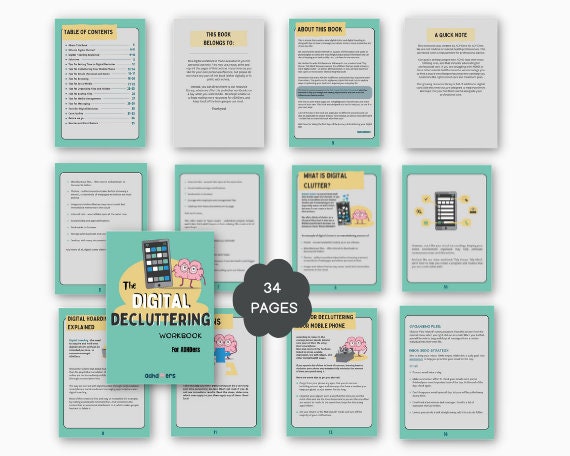
This image is property of i.etsystatic.com.
Promoting Digital Well-being
Digital decluttering goes beyond just organizing your digital spaces; it also involves promoting a healthy and mindful relationship with technology. Here are some strategies for promoting digital well-being:
Establish digital boundaries and limit your screen time. Set specific times during the day when you’ll disconnect from digital devices or set dedicated hours for focused, uninterrupted work. This will help maintain a healthy balance between digital engagement and real-life experiences.
Practice digital mindfulness by being present and fully engaged in your digital activities. Limit multitasking and focus on one task at a time. Be intentional with your digital interactions and avoid mindless scrolling or browsing.
Set mindful notifications on your devices to minimize distractions. Customize your notification settings to receive only the most important updates and alerts. Disable or limit notifications from non-essential apps or platforms to reduce the urge to constantly check your devices.
Engage in regular digital detoxes and take breaks from digital devices. Take time to disconnect, recharge, and engage in offline activities such as reading, exercising, or spending time with loved ones. This will help refresh your mind and reduce digital fatigue.
Explore digital well-being apps and tools that can assist in managing your digital habits. These apps can track your screen time, set limits on app usage, or provide reminders for taking breaks. Find the tools that work best for you and align with your digital well-being goals.
Sustaining a Digital Declutter
Once you’ve completed the initial digital decluttering process, it’s important to have a plan in place to sustain a clutter-free digital environment. Here are some strategies for sustaining a digital declutter:
Create a maintenance routine to regularly review and declutter your digital spaces. Set aside dedicated time each month or quarter to assess your digital clutter, delete unnecessary files, and organize new content. Consistency is key to preventing digital clutter from accumulating again.
Regularly review and reassess your digital consumption habits. Monitor your subscriptions, usage patterns, and digital behaviors to identify areas where clutter may be creeping back in. Adjust your habits as needed to maintain a clutter-free digital lifestyle.
Avoid digital hoarding habits by regularly purging and deleting unnecessary files, emails, or notifications. Be ruthless in maintaining a clutter-free digital space and avoid the temptation to hold onto things “just in case.”
Continually reassess your digital consumption and be mindful of what you bring into your digital spaces. Before subscribing, downloading, or adding new files, ask yourself if they truly add value or serve a purpose. Being intentional with your digital intake can help prevent clutter from building up again.
By understanding digital clutter, preparing for digital decluttering, organizing your digital files and folders, managing email inbox clutter, taming social media overload, cleaning up digital photos and videos, managing digital subscriptions, streamlining digital workspaces, promoting digital well-being, and sustaining a digital declutter, you can regain control over your digital life, improve your mental well-being, and create a more organized and efficient digital environment. Embrace digital minimalism and embrace the benefits of a clutter-free digital lifestyle.

This image is property of www.thelifestyle-files.com.






